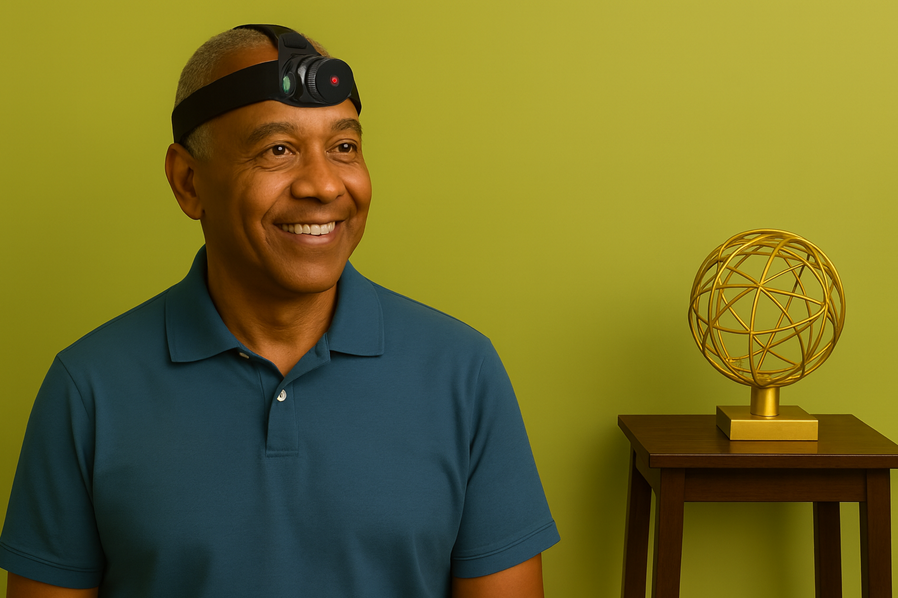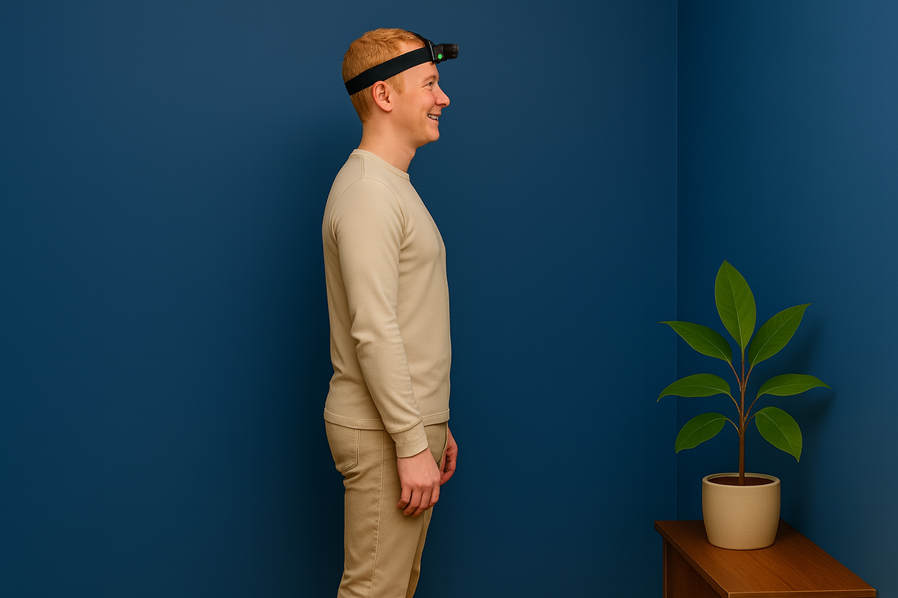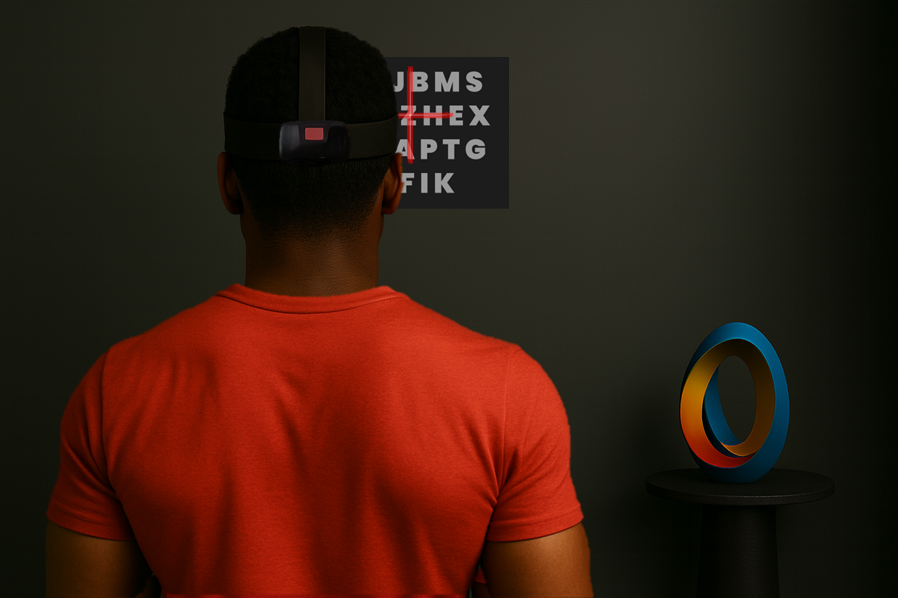Seated Foundations
This set of exercises helps control your neck muscles while sitting still. By making small, slow head movements in a seated position, you can improve how your neck muscles work together, reduce extra movement in your upper body, and get better at knowing when your head is straight. These exercises build the base for more advanced ones later.
-
A.1
-
A.2
-
A.3
-
A.4
-
A.5
-
A.6
-
A.7
-
A.8
-
A.9
-
A.10
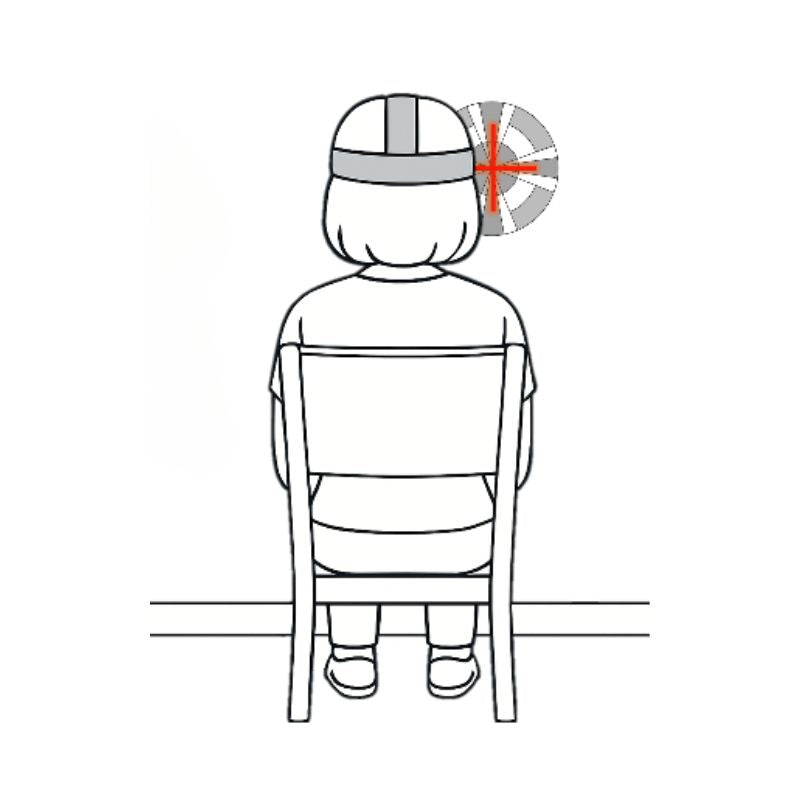
Neutral Fixation
Sit upright with your lower back supported and feet flat. Point the cross-hair to the centre of the wall target.
Hold it perfectly still for 30 seconds while breathing evenly.
Why it matters?
This exercise helps keep your head still and centred using the small, deep muscles in your neck.
These muscles are important for balance, head control, and posture.
By focusing on staying steady, you also reduce the need for your shoulders or upper back to compensate.
This is particularly helpful if you have had a neck injury, balance problems, or difficulty keeping your head upright for long periods.

Horizontal Tracking
Keep your back straight and body still.
Slowly turn your head left and right through a comfortable range, keeping the cross-hair moving in a straight horizontal line.
You can make it harder by practising on narrower lines.
Why it matters?
Turning your head smoothly from side to side without moving your body helps train proper neck rotation.
It improves control of the muscles that guide your head and supports better coordination between your neck and eyes.
This is useful if you experience stiffness, dizziness, or have trouble turning your head evenly to both sides, such as after whiplash or prolonged poor posture.

Vertical Tracking
Stay upright and avoid bending your upper back.
Nod your head up and down, keeping the cross-hair on a straight vertical line.
Do repetitions each way, pausing briefly at the top and bottom.
Why it matters?
This exercise helps you move your head up and down in a smooth, controlled way without using your upper back.
It improves how your neck muscles work together and helps you stay better aligned.
It is especially helpful if you tend to lean your head forward, feel neck tension, or get headaches that start from your neck.
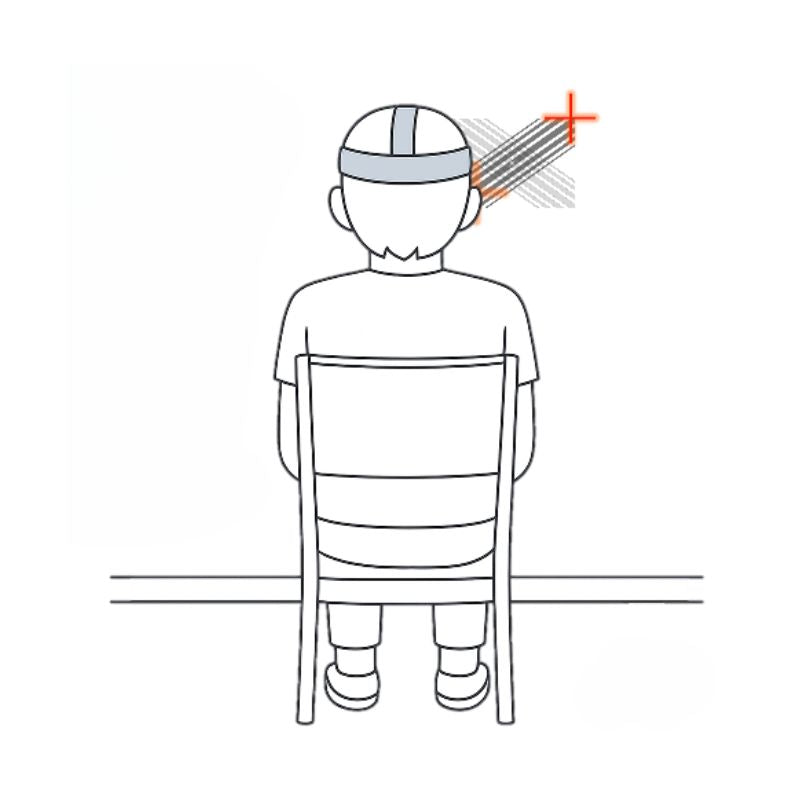
Diagonal Tracing
From a steady seated position, move your head so the cross-hair traces a diagonal path from top left to bottom right.
Then repeat top right to bottom left.
Perform smooth, controlled passes in each direction.
Move to narrower lines to increase difficulty.
Why it matters?
Moving your head diagonally challenges your control in more complex directions, combining forward, backward, and side movement all in one.
This is important because daily tasks like checking blind spots, walking through crowded areas, or looking down and across while lifting something all require coordinated head control in more than one direction.
It also supports recovery after concussion, neck injuries, or dizziness that affects your ability to track moving objects.

Eyes-Closed Return
Aim the cross-hair at centre. Close your eyes, turn your head 15 degrees to one side, pause, then return to where you think centre is.
Open your eyes to check alignment. Repeat alternating sides and note any drift.
Why it matters?
This exercise helps you improve your ability to sense where your head is without relying on your eyes.
It strengthens the internal “position sense” in your neck, which is important for balance, coordination, and preventing falls.
This skill is often affected by concussion, neck strain, or ageing, and retraining it can help you feel more stable and confident in everyday movement.
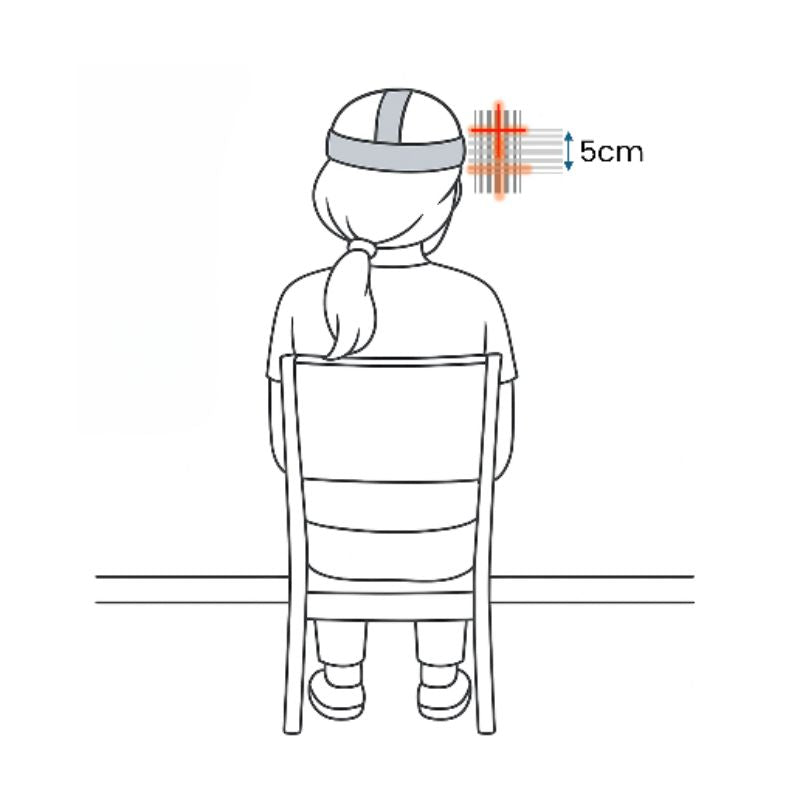
Mini-Nods
Keep your posture steady.
Make very small nodding movements, about five centimetres, while keeping the cross-hair centred.
Pause briefly after every five to reset posture and breathing.
Why it matters?
These small nods target the deep muscles at the front of the neck, which are often underused if you’ve had poor posture, pain, or fatigue.
Strengthening these muscles improves endurance, posture control, and helps reduce neck strain during reading, working, or driving.
It also lays the foundation for more challenging movements later.

Mini-Shakes
Gently rotate your head side to side in a small range, guiding the cross-hair smoothly along a horizontal path.
Perform these movements, keeping timing equal and avoiding jerky changes in direction.
Why it matters?
This exercise improves fine control of side-to-side head movements.
It helps calm down overactive muscles, supports visual tracking, and teaches your neck to move smoothly.
This can be helpful if you feel “stiff” when looking around, or if you experience eye strain, headaches, or balance problems linked to poor neck control.

Lateral Tilts
10 repetitions each side
Sit tall and tilt your head so one ear moves towards the shoulder, then return to upright.
Keep the vertical arms of the cross-hair equally spaced from centre.
Perform tilts to each side with symmetrical range.
Why it matters?
Tilting the head side to side helps retrain balance between the muscles on both sides of your neck.
This movement is often restricted or uneven if you have had neck pain, muscle tightness, or a vestibular condition (which affects balance).
Practising this helps improve head control and posture, especially when walking, sitting upright, or changing direction.
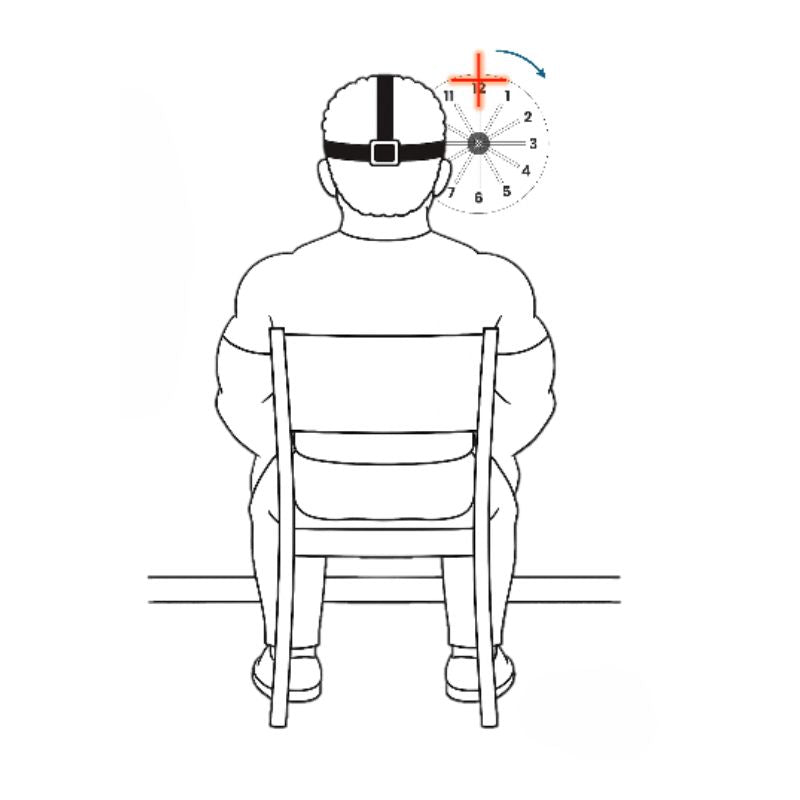
Clockwise Circles
5 full circles
Move your head in a smooth, steady clockwise circle, guiding the cross-hair to draw a 20-centimetre diameter circle on the wall.
Complete full circles without pausing, maintaining control and rhythm.
Why it matters?
Circular movements challenge your neck in all directions at once, combining control, rhythm, and awareness.
This helps identify which directions feel stiff or weak and builds better coordination.
It is especially useful for people recovering from injury or involved in sports, where the head moves quickly in multiple directions.
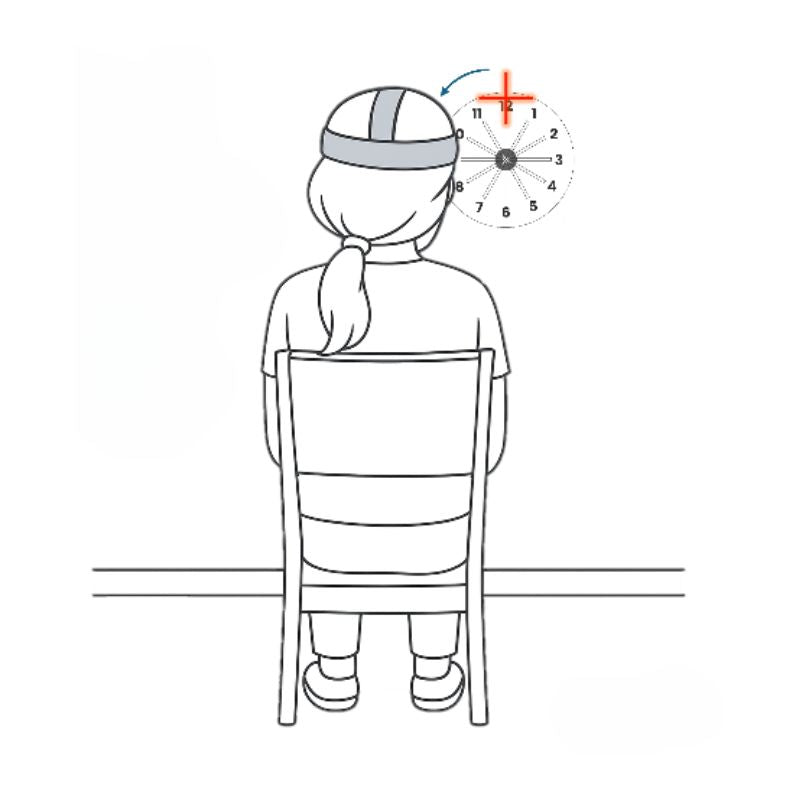
Anti-clockwise Circles
5 full circles
Move your head in a smooth, steady anticlockwise circle, guiding the cross-hair to draw a 20-centimetre diameter circle on the wall.
Guide the cross-hair through smooth, controlled circles of the same size and pace.
Why it matters?
This reinforces even control on both sides of the neck and helps correct any movement patterns that are stronger or stiffer on one side.
It supports symmetrical neck strength and control, which is important for people with long-standing habits like turning one way more often, or recovering from one-sided injuries.

